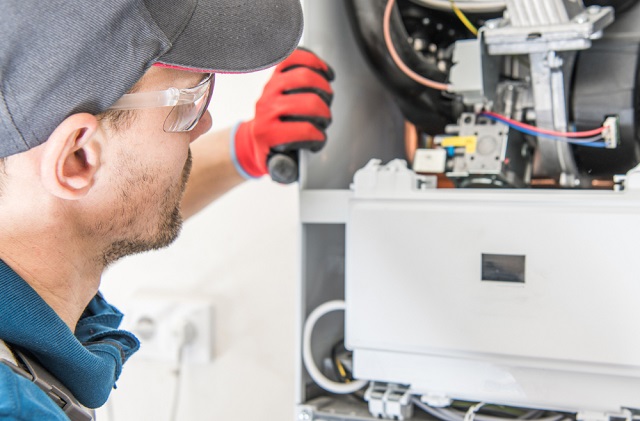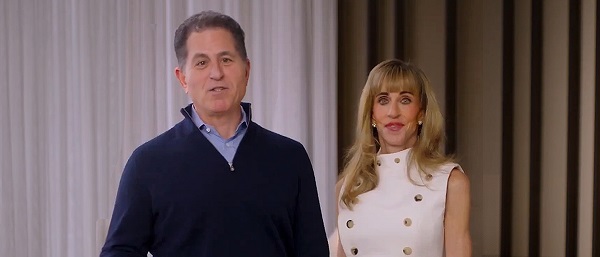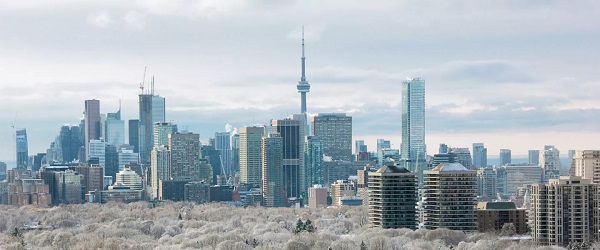Energy
Montreal passes ban on natural gas, oil, and propane in newly constructed buildings

From LifeSiteNews
‘The bylaw on GHG emissions from new buildings represents significant progress in our community’s ecological transition,’ said Montreal Mayor Valérie Plante.
The City of Montreal is set to ban natural gas, oil and propane for heating and cooking in all newly constructed buildings by the tail-end of 2024.
On October 27, Montreal’s executive committee approved a bylaw banning all new buildings constructed with three floors or fewer from having any gas hookups beginning in October 2024 as part of the city’s plan to make its buildings emissions free by the year 2040.
“The bylaw on GHG emissions from new buildings represents significant progress in our community’s ecological transition,” said Montreal Mayor Valérie Plante, according to CBC News.
Under the new bylaw, gas-powered heating systems, hot water systems and items such as stoves, barbecues, pools and spas will be banned from being installed in new buildings. The bylaw takes effect for buildings up to three stories and 600 square meters in area starting October 1, 2024, and for new, larger buildings, starting April 1, 2025.
Buildings which have not been granted a permit by the announced deadline will be required to build under the new regulations.
The ban includes propane, natural gas and heating oil. However, it exempts buildings hooked up to existing urban heating networks as well as industrial buildings.
The bylaw also provides exemptions to outdoor and temporary heaters for construction, generators, commercial use professional stoves, and outdoor barbecues with propane tanks. However, barbecues connected to a propane network or natural gas will be banned.
According to Radio-Canada, those who fail to comply with the bylaw can face fines of up to $4,000 per day for repeat offences.
The bylaw follows recommendations from earlier this year by the city’s water, environment and sustainable development commission. It is also part of Montreal’s 2020-2030 climate plan, which includes a goal of zero-emission buildings by 2040.
The plan is reportedly inspired by Vancouver and New York City, which are set to enforce similar bans on natural resources.
Montreal’s decision comes despite warnings that net-zero goals may be impossible to achieve and could result in compromised infrastructure during Canada’s cold winters.
Earlier this month, Alberta’s electric grid operator condemned the federal government’s net-zero emissions goal by 2035 as “not feasible.”
While Montreal is embracing the energy regulations projected to be detrimental to Canadians, western provinces are increasingly defending the use of natural resources.
Late last month, Smith announced that she is preparing to use her province’s Sovereignty Act to fight the energy regulations proposed by Prime Minister Justin Trudeau’s federal government, which desires to implement policies similar to what Montreal just passed, but on a nationwide scale.
The Trudeau government’s current environmental goals – in lockstep with the United Nations’ “2030 Agenda for Sustainable Development” – include phasing out coal-fired power plants, reducing fertilizer usage, and curbing natural gas use over the coming decades.
The reduction and eventual elimination of the use of so-called “fossil-fuels” and a transition to unreliable “green” energy has also been pushed by the World Economic Forum (WEF) – the globalist group behind the socialist “Great Reset” agenda – an organization which Trudeau and some of his cabinet are involved.
Dan McTeague
Will this deal actually build a pipeline in Canada?

By Dan McTeague
Will Carney’s new pipeline deal actually help get a pipeline built in Canada? As we said before, the devil is in the details.
While the establishment and mainstream media cheer on the new pipeline agreement, there are specific details you need to be aware of.
Dan McTeague explains in his latest video.
Alberta
Premier Smith: Canadians support agreement between Alberta and Ottawa and the major economic opportunities it could unlock for the benefit of all

From Energy Now
By Premier Danielle Smith
Get the Latest Canadian Focused Energy News Delivered to You! It’s FREE: Quick Sign-Up Here
If Canada wants to lead global energy security efforts, build out sovereign AI infrastructure, increase funding to social programs and national defence and expand trade to new markets, we must unleash the full potential of our vast natural resources and embrace our role as a global energy superpower.
The Alberta-Ottawa Energy agreement is the first step in accomplishing all of these critical objectives.
Recent polling shows that a majority of Canadians are supportive of this agreement and the major economic opportunities it could unlock for the benefit of all Canadians.
As a nation we must embrace two important realities: First, global demand for oil is increasing and second, Canada needs to generate more revenue to address its fiscal challenges.
Nations around the world — including Korea, Japan, India, Taiwan and China in Asia as well as various European nations — continue to ask for Canadian energy. We are perfectly positioned to meet those needs and lead global energy security efforts.
Our heavy oil is not only abundant, it’s responsibly developed, geopolitically stable and backed by decades of proven supply.
If we want to pay down our debt, increase funding to social programs and meet our NATO defence spending commitments, then we need to generate more revenue. And the best way to do so is to leverage our vast natural resources.
At today’s prices, Alberta’s proven oil and gas reserves represent trillions in value.
It’s not just a number; it’s a generational opportunity for Alberta and Canada to secure prosperity and invest in the future of our communities. But to unlock the full potential of this resource, we need the infrastructure to match our ambition.
There is one nation-building project that stands above all others in its ability to deliver economic benefits to Canada — a new bitumen pipeline to Asian markets.
The energy agreement signed on Nov. 27 includes a clear path to the construction of a one-million-plus barrel-per-day bitumen pipeline, with Indigenous co-ownership, that can ensure our province and country are no longer dependent on just one customer to buy our most valuable resource.
Indigenous co-ownership also provide millions in revenue to communities along the route of the project to the northwest coast, contributing toward long-lasting prosperity for their people.
The agreement also recognizes that we can increase oil and gas production while reducing our emissions.
The removal of the oil and gas emissions cap will allow our energy producers to grow and thrive again and the suspension of the federal net-zero power regulations in Alberta will open to doors to major AI data-centre investment.
It also means that Alberta will be a world leader in the development and implementation of emissions-reduction infrastructure — particularly in carbon capture utilization and storage.
The agreement will see Alberta work together with our federal partners and the Pathways companies to commence and complete the world’s largest carbon capture, utilization and storage infrastructure project.
This would make Alberta heavy oil the lowest intensity barrel on the market and displace millions of barrels of heavier-emitting fuels around the globe.
We’re sending a clear message to investors across the world: Alberta and Canada are leaders, not just in oil and gas, but in the innovation and technologies that are cutting per barrel emissions even as we ramp up production.
Where we are going — and where we intend to go with more frequency — is east, west, north and south, across oceans and around the globe. We have the energy other countries need, and will continue to need, for decades to come.
However, this agreement is just the first step in this journey. There is much hard work ahead of us. Trust must be built and earned in this partnership as we move through the next steps of this process.
But it’s very encouraging that Prime Minister Mark Carney has made it clear he is willing to work with Alberta’s government to accomplish our shared goal of making Canada an energy superpower.
That is something we have not seen from a Canadian prime minister in more than a decade.
Together, in good faith, Alberta and Ottawa have taken the first step towards making Canada a global energy superpower for benefit of all Canadians.
Danielle Smith is the Premier of Alberta
-

 Focal Points1 day ago
Focal Points1 day agoPharma Bombshell: President Trump Orders Complete Childhood Vaccine Schedule Review
-

 Automotive19 hours ago
Automotive19 hours agoTrump Deals Biden’s EV Dreams A Death Blow
-

 Automotive19 hours ago
Automotive19 hours agoCanada’s EV Mandate Is Running On Empty
-

 Alberta1 day ago
Alberta1 day agoA Memorandum of Understanding that no Canadian can understand
-

 Censorship Industrial Complex1 day ago
Censorship Industrial Complex1 day agoFrances Widdowson’s Arrest Should Alarm Every Canadian
-

 Business9 hours ago
Business9 hours agoWhy Does Canada “Lead” the World in Funding Racist Indoctrination?
-

 Energy2 days ago
Energy2 days agoSenate votes to reopen Alaska Coastal Plain to energy leasing
-

 Media9 hours ago
Media9 hours agoThey know they are lying, we know they are lying and they know we know but the lies continue










